THIS ARTICLE/PRESS RELEASE IS PAID FOR AND PRESENTED BY NTNU Norwegian University of Science and Technology - read more
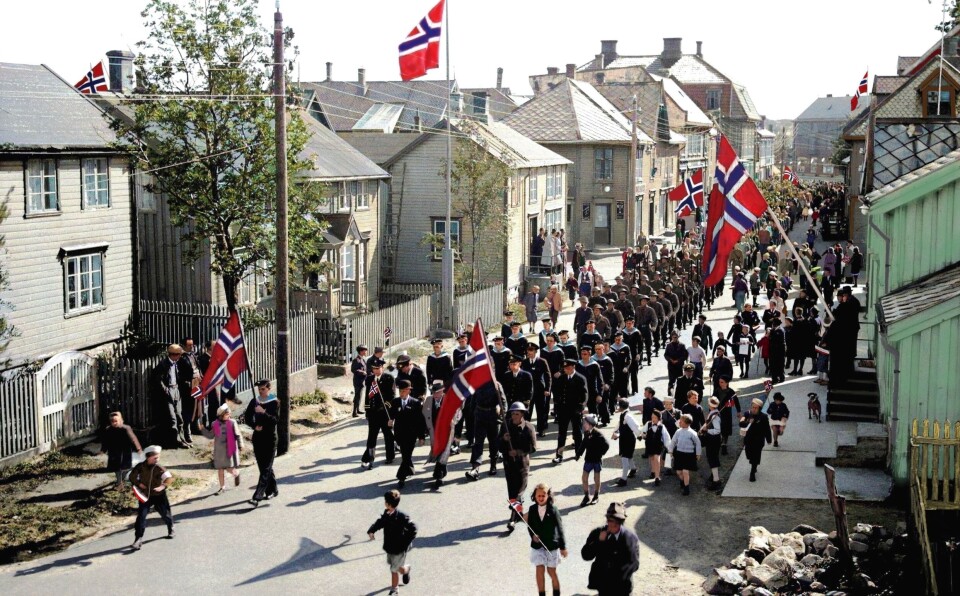
It didn't take long for Norway to get back on its feet after the war
All the infrastructure that the occupying power built during the war played a significant role.
Archaeologist Kristoffer Eliassen Grini has completed a new study of the landscapes dating from the Nazi occupation in Trondheim.
He investigated how Norwegians have used buildings and structures built by the occupying power for various purposes since 1945 and how they are handled as cultural monuments today.
The study was carried out by the Department of Historical and Classical Studies at NTNU.

Left an indelible mark
The Second World War left an indelible mark on the lives of many people in Norway. People lost their loved ones and many lost their homes, not least in northern Norway where scorched-earth tactics left large parts of Finnmark and northern Troms in ashes.
People in the Norwegian resistance were tortured and killed, and more than 700 Jews were deported to Nazi extermination camps.
How have remnants of the war, such as buildings and infrastructure, been handled afterwards? And how much is still in use?
“These physical vestiges can be linked to memories from the war, so how we’ve used, perceived and managed them from 1945 to the present can tell us something about how the view of the occupation period has been changing,” Grini says.
Major changes have taken place here, especially in recent years.
Airports, E6 and a railway in the north
During the war years, the Nazis built a lot of infrastructure and many facilities and buildings across large parts of the country. Many airports were also established; before the war, Norway had three airports with fixed runways, and after the war there were more than 30.
Military facilities were established in many places in the country, power stations were built and the telecommunications and electricity network was expanded.
Rapid movement of troops and material was important for the occupying power. The need for supplies and crews to reach the front in northern Norway laid the foundation for the development of national highway 50, today’s E6, which is the main north-south highway in the country.
The railway, and in particular the Nord-Norge line, was built for the same purpose.

Material resources supplied from Germany
Grini’s research is a study of the defence system that the German occupying power established around the Trondheim Fjord.
Submarine bunkers and barracks, airports and harbours, air defences and radar, casinos and cinemas were all built here.
“It really didn’t take long before Norway got back on its feet after the war, both because of the infrastructure that had been built during the war years and also because of all the material that was left behind by the Germans. A lot of resources were supplied from Germany during the occupation, which actually benefitted Norway after the war,” Grini says.
The material values that remain to this day are traces of these remnant resources.
“Saying that the Nazis contributed to building Norway was controversial in the post-war period, so this topic was not investigated much until after the turn of the millennium. Now, with the greater distance of time from the war, we can look at the material remains with a different perspective,” he says. “One of the newer research trends is that war memorials now have a different focus in historical, archaeological and cultural heritage research."
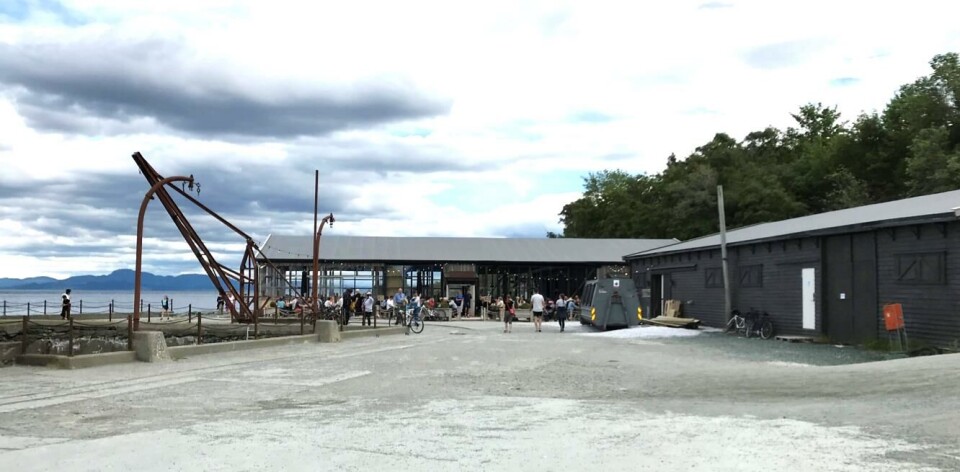
The Trondheim Fjord was important to the occupying power
Hitler’s Germany was preoccupied with controlling ocean areas and ports. Access to port bases along the Norwegian coast was strategically important for the German navy’s plans to take control of all of Europe.
The Trondheim Fjord was considered a central hub in Norway, and the fjord’s narrow inlet made it impossible for British vessels to enter the fjord. From central Norway, large German vessels could also go on raids to disrupt or destroy Allied trade routes.
“The Trondheim Fjord was one of the main reasons that Norway was occupied,” Grini says.
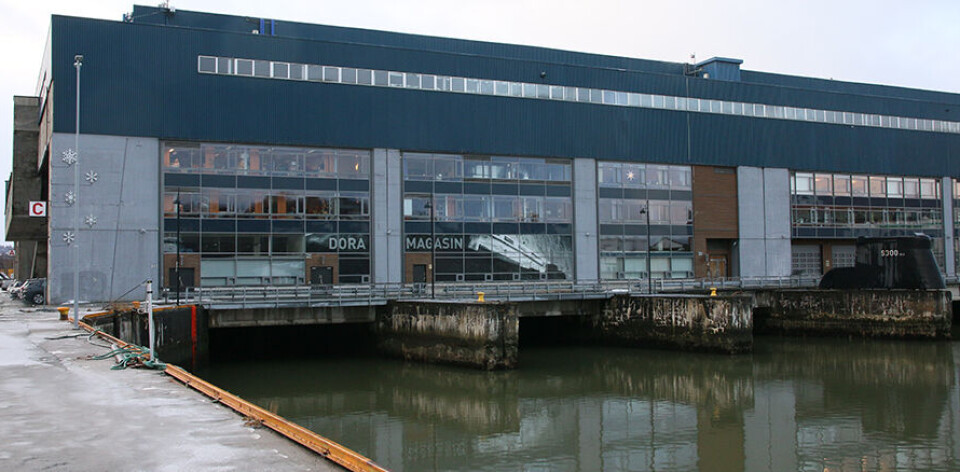
Absurd megalomania
Neu-Drontheim (New-Trondheim) – or rather Nordstern (North Star) as the city project was originally called – was to be built just outside Trondheim. Planned for 300,000 inhabitants, this was the largest urban plan in the German-occupied areas.
The city was to become a naval base, ‘a German Singapore,’ controlled directly from Germany.
Germany also wanted to establish a vast naval base in Trondheim and initiated the construction of the enormous submarine bases Dora 1 and Dora 2.
“Dora is the largest and most significant material war memorial in Norway. This and the other German building plans in Norway testify to an absurd megalomania,” Grini says. “In several ways, the German occupation marks a before and after in the development of Trondheim city. The war heritage consists of more than personal memories, it’s also material culture."
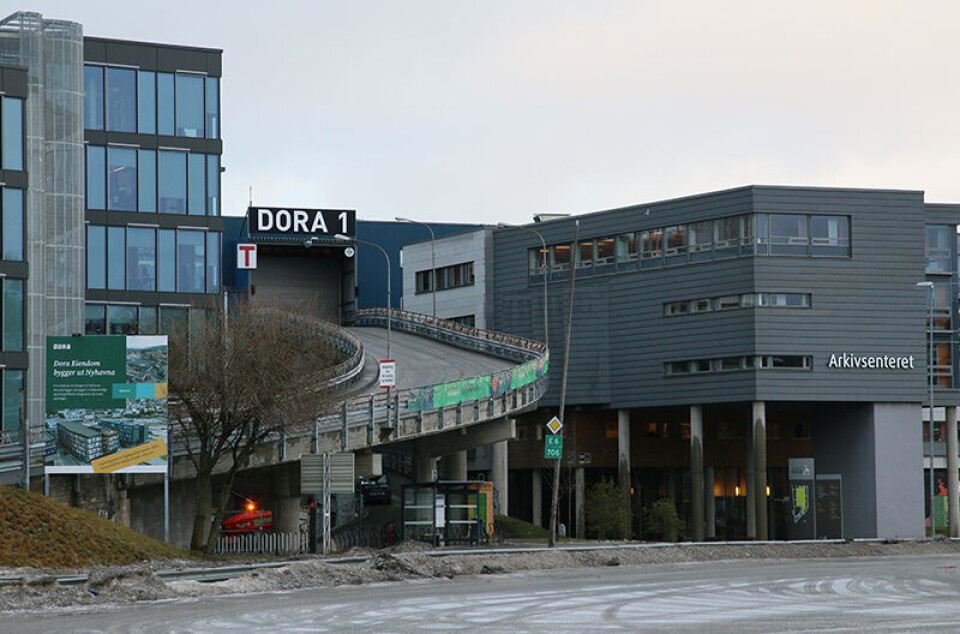
Britain wanted to blow them up
By the end of the war, one submarine base was fully built and one half-finished at Nyhavna in Trondheim. The Norwegian authorities wanted to keep them as a Norwegian submarine base, while the British authorities wanted them to be blown up to prevent them from falling into the wrong hands in the future.
The solution was a compromise: Dora 1, which the Germans had put into use during the occupation, was to be kept and used as a Norwegian submarine base.
The half-finished Dora 2 was to be blown up. Blasting of the three-metre-thick walls of reinforced concrete was started – but then quickly stopped.
“Several possible explanations exist for why the blasting was stopped. One is that the ground was too unstable due to clay and quick clay. Another is that the port manager stopped the work because it was too dangerous and also extremely expensive,” Grini says.
Plan was to convert submarine base into a shopping centre
So what do you do with giant buildings that aren’t particularly attractive and that ooze bad war memories?
Dora 1 served as a submarine base until the mid-1950s, but it eventually became too expensive to use.
In 1961 the base was sold to private individuals who used it for various storage purposes.
In the 1980s, plans were developed to convert Dora 1 into a shopping centre. The rough concrete walls would be hidden behind new materials that would invite people in. But these plans were never realised.
At the start of the 2000s, the Dora archive centre moved into the bunker. The building’s proximity to the water provided a stable temperature and humidity level, and created a favourable climate for conserving archival materials.
Dora 1 also contains storage facilities for Trondheim’s museums and for NTNU, as well as a huge bowling alley.
Dora 2 has had several functions over the years, and today houses a number of knowledge management and technology companies from the maritime sector, as well as workshops.
“Precisely the fact that the war memorials were used for new purposes in Norway after the war is one of their typical features. Despite being erected by the enemy, in many cases they turned out to be practical for many different types of use. A shortage of building materials and facilities persisted until well after the war, so whatever could be used was used,” Grini says.
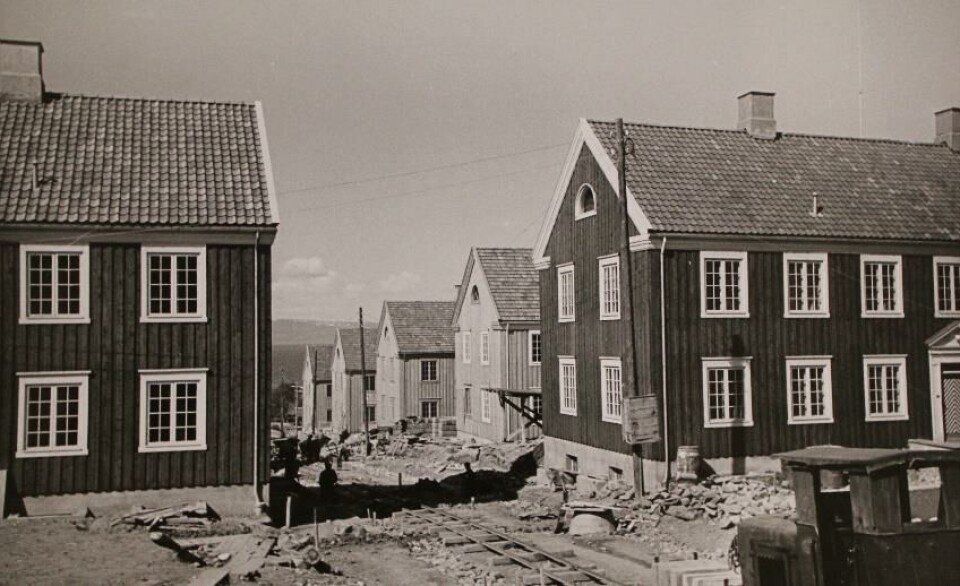
Attitude shift
Nyhavna, where the submarine bases are located, is today one of Trondheim’s most exciting and attractive urban development areas.
“The far-reaching plans for Nyhavna over the past ten years have created a renewed focus on the past of this place. It has become important to give the urban development project historical depth and to connect it both to its war history and to the industrial history of the area. That probably couldn’t have happened 20-30 years ago,” Grini says.
The reason for this shift, he says, is a change in attitude towards the scars from the war around the turn of the millennium.
“The shift was a turning point where renewed attention was paid to war memorials. The idea that these places were also cultural monuments and could be protected was established. Until this point, attention had mostly been paid to how the buildings could be used and given new functions,” Grini says.
The change in attitude could be related to the fact that the witnesses and first-hand sources – the people who had experienced the war – are disappearing.
Now the material war memorabilia, the second-hand sources, are what remain.
“New generations ask new questions about their past, and new ideals have made themselves felt in cultural heritage policy. This has led to several German defences and facilities being protected, and many such buildings have come under cultural heritage management since the turn of the millennium,” Grini says.
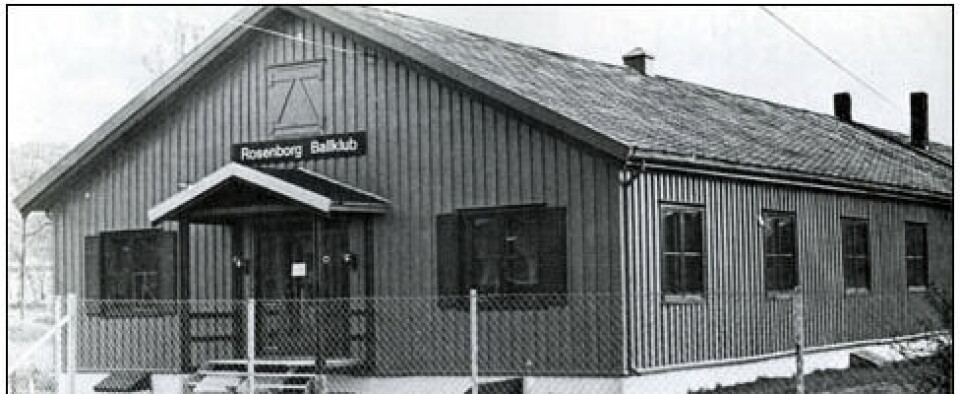
High-status barracks and Rosenborg barracks
The preservation of the Persaunet camp in Trondheim is another example of the change in attitude around the turn of the millennium.
Persaunet was a high-status camp for the crews who worked on submarines during the war. The submarine crew had tough working conditions at sea and contributed an important effort for the occupying power. They were thus treated to good meals in the Persaunet camp when they were in port.
The houses here were well-insulated and solid, and offered submarine crews relatively spacious living conditions.
The Norwegian military owned and used the buildings in the Persaunet camp until the turn of the millennium, when it disposed of many of its buildings and facilities, including Persaunet camp, which was sold to private parties.
“Then the Norwegian Directorate for Cultural Heritage stepped in and protected all the houses so that they would be preserved as they were. This would not have happened in the 1970s, 80s, and probably not even in the 90s,” Grini says.
The legendary Rosenborg barracks at the Lerkendal stadium is also a legacy from the days of the war. They are the remnants of a military camp that was located in Trondheim’s Lerkendal borough.
Materials and social facilities were in short supply after the war, and it wasn’t uncommon for clubs and teams to buy German barracks to use as clubhouses.
“The barracks at Lerkendal are probably amongst the foremost symbols of the post-war policy of reusing war memorials,” Grini says.
Forced labour and prisoners of war
Grini emphasises that the material legacy of the Germans is also filled with toil, blood and forced labour.
“You can’t free the material heritage from the painful context of the Nazis’ use of forced labour and prisoners of war,” he says, and stresses that many of the material remains are also testimony to this part of history.
To build roads and railways in the north, Nazi Germany used prisoners of war (POW) from the Soviet Union, Yugoslavia and Poland who were in labour camps in northern Norway under absolutely terrible conditions. Many of them died of exhaustion, hunger and cold, and many others were executed.
All told, almost 14,000 Soviets and over 2,000 Yugoslavs died in Norway during the war.
A stretch of road northeast of Saltdal municipality in Nordland county was named Blodveien, the ‘Blood Road’.
Hitler also ordered the rapid development of the Polareisenbahn – or Polar Line railway – to Kirkenes. It was considered essential to use Soviet POWs for the project to succeed, so thousands of POWs were put to work as slave labour.
Lives close to war history
Grini has been interested in war history ever since he was a small boy. His grandfather was keen to convey experiences and stories from the war to his grandson. His grandfather grew up in Reina in Trondheim, and as a teenager had witnessed the submarine bases Dora 1 and 2 as they were being built, almost right outside his living room door.
As adults, Grini's grandparents built a house on one of the barrack plots in Persaunet camp, and it is in this house that Kristoffer Eliassen Grini lives today.
Grini first took a master’s degree in archaeology at NTNU, and his doctorate combined his interest in archaeology and war history that included vestiges of the Second World War in Trondheim.
Today Grini works as a researcher at the Falstad Centre, in addition to being a university lecturer and teaching at the Department of Historical and Classical Studies at NTNU.
Reference:
Kristoffer Eliassen Grini: Okkupasjonslandskap i Trondheim: Mellom materialitet og minne, makt og mening (Landscapes of Occupation in Trondheim: Between Materiality and Memory, Power and Meaning). Doctoral dissertation at the Department of Historical and Classical Studies at NTNU, 2022. Summary.
Read more content from NTNU:
-
Social media is connected to cyberbullying – but not how we thought
-
Forskere ved NTNU får nesten 24 millioner av EU for å lage nye strømomformere
-
This helps the youngest children enjoy school more
-
Can we tap the ocean’s power to capture carbon?
-
Researchers have uncovered major problems in Norway's salmon industry
-
Why ChatGPT is bad at imitating people





































